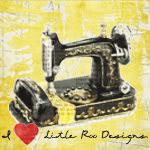I love brushes for so many reasons, but a few are: a) it adds an artistic look to EVERYTHING b) you don't have to have great pix to do it c) I get bored of pictures and it just adds a layer of AwESoMe.
Some things to try: a). make a brush of your signature b) use a brush as a clipping mask c)make a brush alphabet out of your handwriting....I could go on forever!
Tutorial:Digital Brushes in CS4
1. Open picture into a new layer and double click on the Background layer
2. Rename background layer so that it becomes unlocked. Otherwise you can’t use the layer.
3. Use the magnetic lasso (or selection tool of your choice) and select portion of the picture that you want to include in the brush.
4. Click on the Add Layer Mask button at the bottom of the layers pallet.
5. Use a brush black brush to erase any of the unwanted background or use white to add back any background that you have taken away.
6. Right click on the mask and select Add Mask To Selection.
7. Under select at the top of the screen click on “select inverse”.
8. Go back into the layers pallet and select the picture (not the mask) and hit delete. This deletes the background that you do not want to include in the brush.
10. Change the mode of the picture to grayscale. It will ask you if you want to discard color info. Press OK.
11. Under Image, go to Adjustments. Select Brightness/Contrast. Make sure that Preview and Use Legacy (in CS4…not sure about CS3) are both checked.
12. I like to start with the contrast. The secret here is that you want as much contrast as possible. You want to get rid of any gray, or as much gray as you can. I go to 100% contrast and this usually takes care of the problem.
13. Now for the brightness. This is not an exact science. Sometimes a picture just doesn’t work very well. Go into the brightness and play around with it until you get your pic so that you can see faces, noses, eyes, etc. This is where you really just have to play with the thing.
14. Once you have it where you like it, press OK.
15. Now select the magic wand tool in the tool box. Since you will be selecting only white, make sure your tolerance is around 40 or 50.
16. Click in the white areas. Continue selecting the areas in white (with the Add To Selection box selected at the top of the screen). Be sure to zoom in if you have to to select the white.
17. Once you have all the white areas selected (if you don’t you can go back at any time from here on out and select them. Sometimes it’s hard to see) click Delete.
18. Under Edit, select Define Brush Preset. It will ask you what name you want to save it as. I usually just click OK, but feel free to change the name. Whatev.
19. Now, go up to the Brush tool and select it. Scroll to the end of the brushes and you will find your brush. Now it is like any other brush that you have in your pallet. You can change the size, color or use it as a clipping mask.
20. HAVE FUN!!!!





No comments:
Post a Comment
Leave us some love!!!